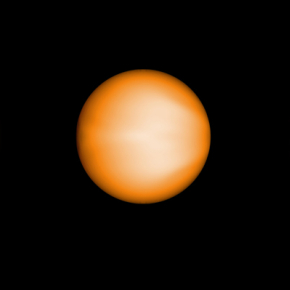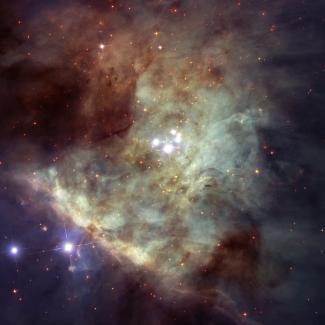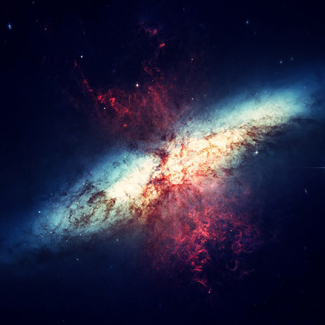
Ultra-Hot Jupiters are Half-Star, Half-Planet
“Ultra-Hot Jupiters” are exoplanets, gas giants that orbit very close to their star. They have two distinct sides: one “day” side that always faces the star where the temperature is 3000°C, and one “night” side that is too dark to be observed with current instruments, with a temperature of 1000°C. Until now scientists did not understand why water vapor could only be detected where these sides meet. An international team1 lead by a researcher from the Laboratoire d’Astrophysique de Marseille (CNRS/CNES/Aix-Marseille Université) has now proposed that on the day side of these exoplanets the temperatures are so extreme that they can break water molecules into their atomic components and therefore make them undetectable. Molecules can then reform on the night side and therefore become visible again at the limit between the two sides of a planet. This leads researchers to conclude that the atmosphere on the day side of Ultra-Hot Jupiters resembles a stellar one more than a planetary one. This study will be released in Astronomy and Astrophysics.

© NASA/JPL-Caltech/V. Parmentier (AMU)
From thermal dissociation to condensation in the atmospheres of ultra hot Jupiters: WASP-121b in context ,V. Parmentier, M. R. Line, J. L. Bean, M. Mansfield, L. Kreidberg, R. Lupu,C. Visscher, J-M. Désert, J. J. Fortney, M. Deleuil, J. Arcangeli, A. P. Showman, and M. S. Marley. Astronomy and Astrophysics, September 2018 issue. https://doi.org/10.1051/0004-6361/201833059
Contact
Notes
- Including researchers from Arizona State University (USA), the University of Chicago (USA), Harvard University (USA), Dordt College (USA), the Boulder Space Science Institute (USA), the University of California (USA), the University of Amsterdam (Netherlands), the University of Arizona (USA), and NASA.


